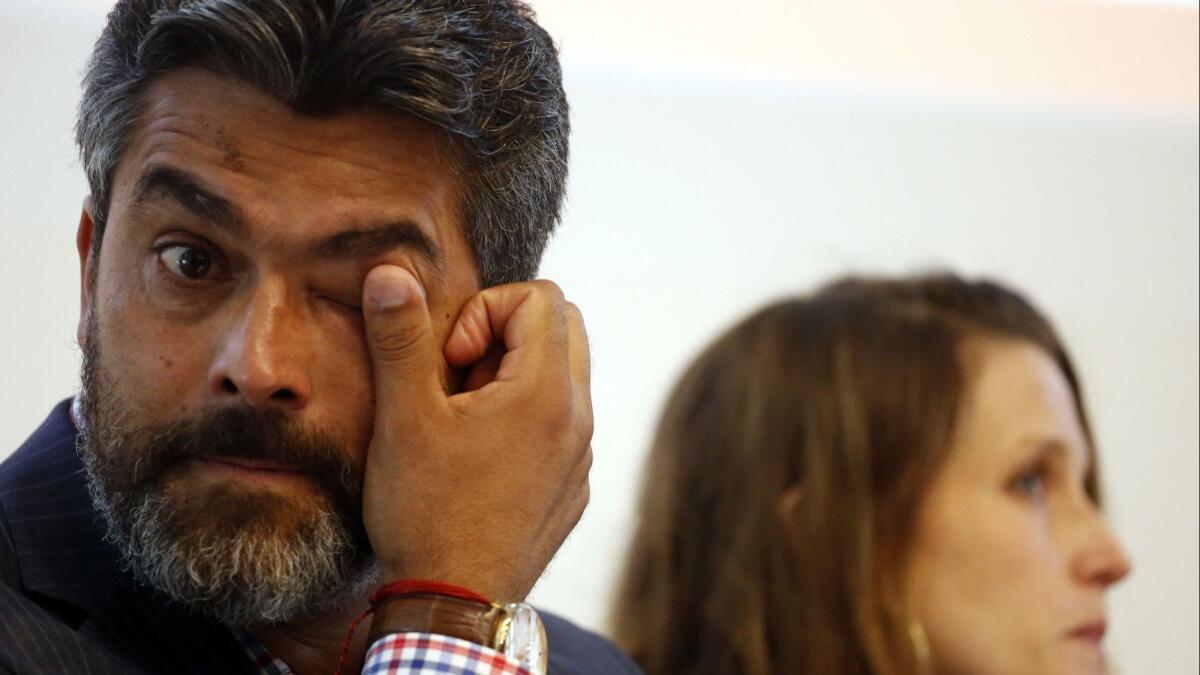Editorial: Eyewitness testimony is often unreliable and police and lawmakers know it

- Share via
Wrongful convictions plague California’s criminal justice system, and pretty much all participants and observers agree on the leading cause: faulty testimony from eyewitnesses. Police line up the suspects or show photos to people who saw either the crime or the events that led up to or followed it, and urge the witnesses to help them close the case and put the criminal behind bars. Wanting to do their duty, witnesses sometimes say, “I think that’s the guy” when what they are thinking is, “I really can’t tell.”
That’s essentially what happened to Francisco “Franky” Carrillo Jr., who was wrongfully convicted in a fatal drive-by shooting and spent nearly 20 years in prison after a Los Angeles County sheriff’s deputy showed a 15-year-old eyewitness a photo and said the person depicted — Carrillo — was the leading suspect. Six months later, five other eyewitnesses were shown the photo and identified Carrillo. They all later recanted.
After the conviction was overturned in 2011, two men confessed to the crime.
The same thing has happened to many others in California. They are sent away for crimes they did not commit based on testimony from eyewitnesses who either were pressured or gently led into falsely identifying a suspect.
More than a decade ago, the late John Van de Kamp, a former California attorney general, led an investigation into failures of the criminal justice system. Under his leadership, a commission found such obvious problems with eyewitness identifications that it didn’t even wait for its final report before issuing a series of recommendations for badly needed improvements: Police should use “double-blind” procedures in which the person conducting the lineup or showing the photos doesn’t know which person is the leading suspect, and therefore can’t lead the witness to make the “proper” identification. Witnesses should be told that the suspect may or may not be among the people in the lineup or the photos, so that they don’t feel pressure to pick someone even if they don’t recognize him or her. Lineups and photo spreads should be videotaped, so that the integrity of the procedures can be examined after the fact.
The California Innocence Coalition identifies 66 wrongful convictions based on eyewitness misidentification — 28 of them in Los Angeles County.
Two bills mandating such procedures were sent to Gov. Arnold Schwarzenegger — who promptly vetoed them. In the midst of a budget meltdown, the governor said that imposing new requirements on local law enforcement agencies was too expensive, because of the cost of video equipment and storage and because the police might have to hire non-officer administrators to conduct the double-blind procedures. Later bills never made it out of committee.
In a country that promises to treat suspects as innocent until they are proven guilty — and in which the Constitution guarantees a fair trial and due process under law — penny-pinching is scant excuse for ensuring the integrity of a conviction.
Besides, police agencies can pay now or pay later. Los Angeles County paid Carrillo $10.1 million in damages for the wrongful conviction. The state paid him $683,300 in compensation. Cities and counties — meaning, of course, their residents — pay millions of dollars each year for the damage caused by their police and sheriff’s departments improperly conducting eyewitness identifications.
The California Innocence Coalition identifies 66 wrongful convictions based on eyewitness misidentification — 28 of them in Los Angeles County.
It is time now for California to do what it should have done in 2008 — require police agencies to abide by a set of standards to protect lineups, photo identifications and other eyewitness procedures from improper influence. Those overdue mandates are now set forth in SB 923, authored by state Sen. Scott Wiener (D-San Francisco) and Assemblyman Marc Levine (D-San Rafael). Lawmakers should quickly send the bill to Gov. Jerry Brown, who should sign it into law.
Follow the Opinion section on Twitter @latimesopinion and Facebook
More to Read
A cure for the common opinion
Get thought-provoking perspectives with our weekly newsletter.
You may occasionally receive promotional content from the Los Angeles Times.









